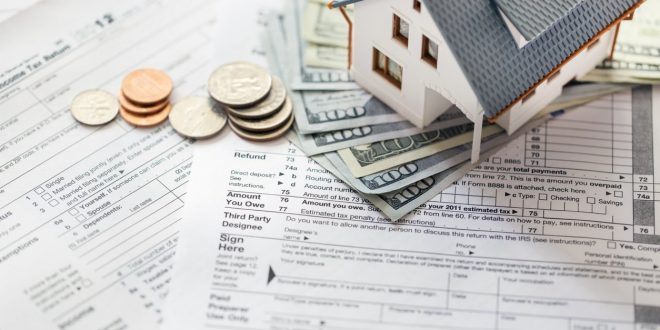Identification rules are critical to successfully acquire replacement properties on the 1031 exchange. Failure to operate within the legal ambit will defeat the whole essence of the exchange.
These identification rules are easy to keep if you’re meticulous enough.
The purpose of this setup is to help a taxpayer postpone the tax payment the law demands on the sale of a property. This function is why 1031 is also known as the deferred tax exchange.
You may read up on how to figure out tax basics in a 1031 exchange on https://www.buynnnproperties.com/1031-exchange/.
Regardless, it is necessary to identify the appropriate property before calculating tax basics. Continue reading to know what these rules are.
Critical Identification Rules To Obey

When sourcing for a replacement property, you’ll want to keep the following rules in mind:
1. The 45-days Identification Period
The identification period is the number of days that the taxpayer has to identify a suitable replacement property. This period starts on the day they sell the relinquished property and ends 45 days after.
After this period, there should be a written document highlighting the identified property. This document has to carry the taxpayer’s signature. They then send the doc to a qualified person involved in the exchange.
That said, the law disqualified persons who keep an agency relationship with the taxpayer. This disqualification is because they may attempt to tweak the rules in their favor. Such persons include the taxpayer’s accountant, employee, attorney, real estate agent, and investment banker.
The taxpayer retains the right to replace an identified property with another as long as they do so within the 45-days identification period.
2. The 3-Property Rule
The 3-property rule allows taxpayers to select 3 different assets as their preferred identification properties.
It is a modification of a previous law that allowed only one replacement property identification.
With this rule, the taxpayer can shortlist 3 identification properties during the identification period.

3. The 200% Rule
The 200% rule states that the taxpayer can choose various identification properties and acquire them too. However, the sum of these properties must not exceed the doubled value of the relinquished property.
For example, if the relinquished property is worth $200,000, the identified replacement assets must not exceed $400,000.
Note here that there’s no clear definition for calculating the market value of identified goods. It may be the amount the seller agrees to sell or the amount the taxpayer is willing to buy. The general rule is to stick to the listing price(s).
4. The 95% Rule
The 95% rule is a slight counter of the 3-property and 200% rules.
This rule permits the taxpayer to select more than three properties worth over 200% of the relinquished property. However, this provision is under the strict condition that the taxpayer acquires a minimum 95% of the calculated sum.
To illustrate, if you select replacement properties worth $450,000 for a relinquished property of $200,000, the transaction remains valid if you acquire properties worth $427,500 at least.
5. The Incidental Property Rule
The incidental property rule involves the belonging inside a replacement property that the taxpayer identifies within the 45-day identification period. This rule says that it is not necessary to mention the items in an identified property separately if their total worth is not over 15% of the property itself.
This law applies only if the said items are typically transferred along with the identified property in a normal exchange.
For instance, a person who buys an apartment building usually gets the furniture, fitting, and laundry machines inside the building. If this building is selected as replacement property and these items are worth below 15% of the building itself, the replacement property rules do not require the taxpayer to mention them.
To illustrate in figures, if the apartment building selected is worth $800,000 and the sum of furniture, machines, and other items does not exceed $120,000 (15% of $800,000), the taxpayer does not need to specify them.
However, this rule applies only to the identification. The overall law requires the taxpayer to select a property worth equally as the relinquished property. For example, selecting a property of $700,000 with incidental property worth $110,500 does not write off any of the tax value owed on the relinquished.

6. The Description Of Replacement Property
The law demands that the description of the selected property is crystal clear and specific. All elements of ambiguity must not exist. For example, the description “a condominium unit at 227 Bleecker Street, London” is unacceptable because it does not specify the actual number of units.
The rules guiding the description of replacement properties are:
- The exchange accepts a replacement property only if it has a 100% unambiguous description in its document of agreement.
- Real properties are agreed to be precisely described if their descriptions refer to them using a legal description, distinguishable title (or name), or street address.
- Personal properties are unambiguous in their descriptions if the document mentions their exact specifications. For instance, a delivery vehicle with a description containing the make and model of the vehicle is valid. 7.
7. Property to Be Produced or Improved
In certain instances, the taxpayer identifies a replacement property that will be in a different state at the time it will be obtained. These are properties that are undergoing improvements, are scheduled to be improved, or are yet to be produced altogether.
When this happens, the law addresses this by stating that the description of the property contains (as best as it can) the intended improvements. The document of agreement has to contain as many practical details as can be coherently added.
Moving forward, the exchange remains valid even if the proposed improvements are still in progress when the taxpayer becomes the owner. Should the property be a real property meanwhile, the improvements should be done within 180 days.
Wrap Up
Keeping to the rules above makes the 1031 exchange a fairly straightforward provision for the taxpayer.
Fortunately, the seven cardinal 1031 exchange requirements are easy to meet. You may source for your ideal real estate investments with the customized list of the NNN Deal Finder.
 Hi Boox Popular Magazine 2024
Hi Boox Popular Magazine 2024



